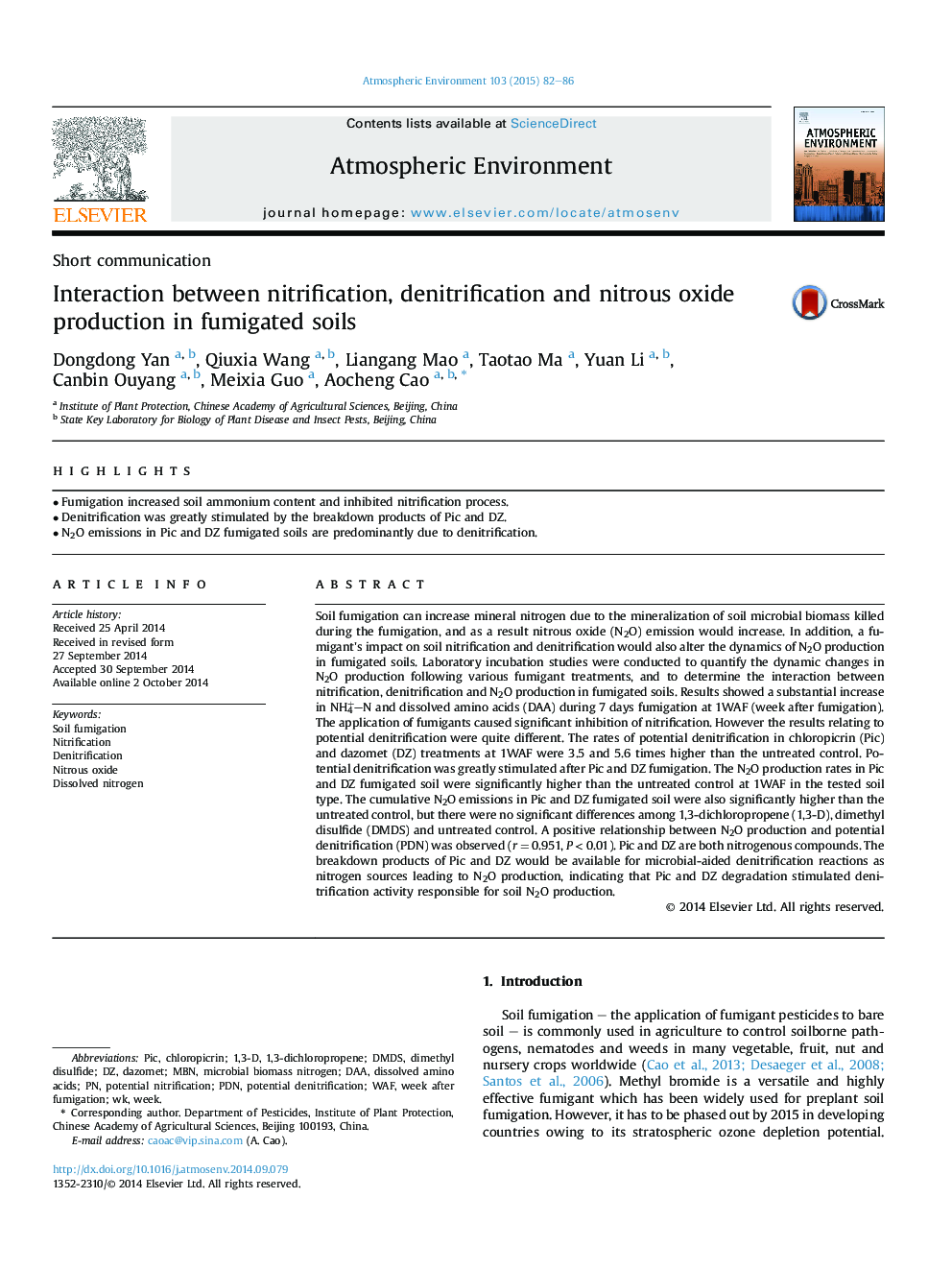| کد مقاله | کد نشریه | سال انتشار | مقاله انگلیسی | نسخه تمام متن |
|---|---|---|---|---|
| 6338566 | 1620368 | 2015 | 5 صفحه PDF | دانلود رایگان |

- Fumigation increased soil ammonium content and inhibited nitrification process.
- Denitrification was greatly stimulated by the breakdown products of Pic and DZ.
- N2O emissions in Pic and DZ fumigated soils are predominantly due to denitrification.
Soil fumigation can increase mineral nitrogen due to the mineralization of soil microbial biomass killed during the fumigation, and as a result nitrous oxide (N2O) emission would increase. In addition, a fumigant's impact on soil nitrification and denitrification would also alter the dynamics of N2O production in fumigated soils. Laboratory incubation studies were conducted to quantify the dynamic changes in N2O production following various fumigant treatments, and to determine the interaction between nitrification, denitrification and N2O production in fumigated soils. Results showed a substantial increase in NH4+-N and dissolved amino acids (DAA) during 7 days fumigation at 1WAF (week after fumigation). The application of fumigants caused significant inhibition of nitrification. However the results relating to potential denitrification were quite different. The rates of potential denitrification in chloropicrin (Pic) and dazomet (DZ) treatments at 1WAF were 3.5 and 5.6 times higher than the untreated control. Potential denitrification was greatly stimulated after Pic and DZ fumigation. The N2O production rates in Pic and DZ fumigated soil were significantly higher than the untreated control at 1WAF in the tested soil type. The cumulative N2O emissions in Pic and DZ fumigated soil were also significantly higher than the untreated control, but there were no significant differences among 1,3-dichloropropene (1,3-D), dimethyl disulfide (DMDS) and untreated control. A positive relationship between N2O production and potential denitrification (PDN) was observed (r = 0.951, P < 0.01). Pic and DZ are both nitrogenous compounds. The breakdown products of Pic and DZ would be available for microbial-aided denitrification reactions as nitrogen sources leading to N2O production, indicating that Pic and DZ degradation stimulated denitrification activity responsible for soil N2O production.
Journal: Atmospheric Environment - Volume 103, February 2015, Pages 82-86